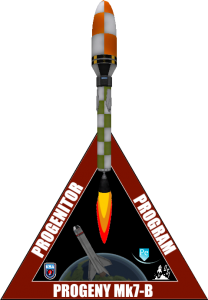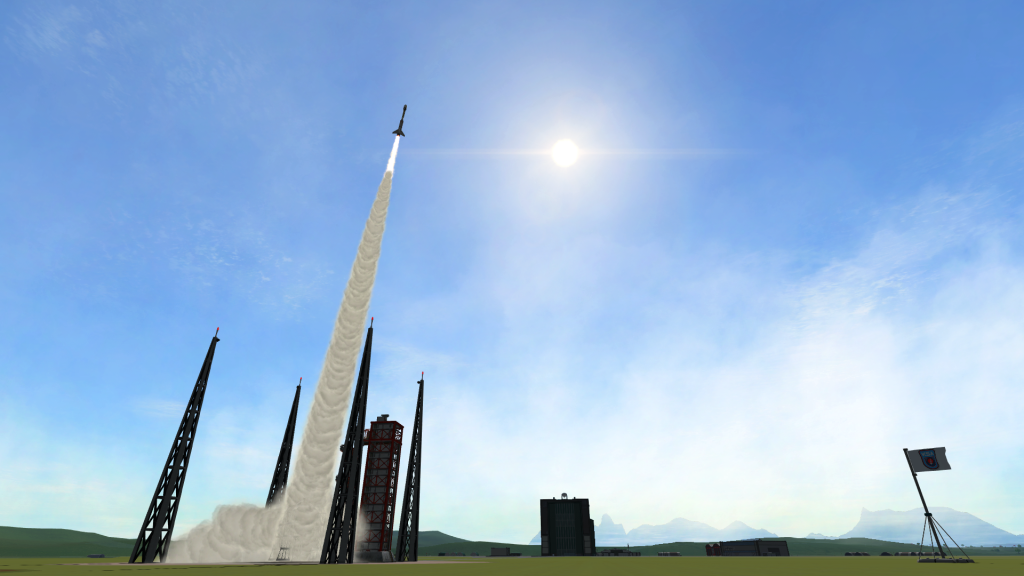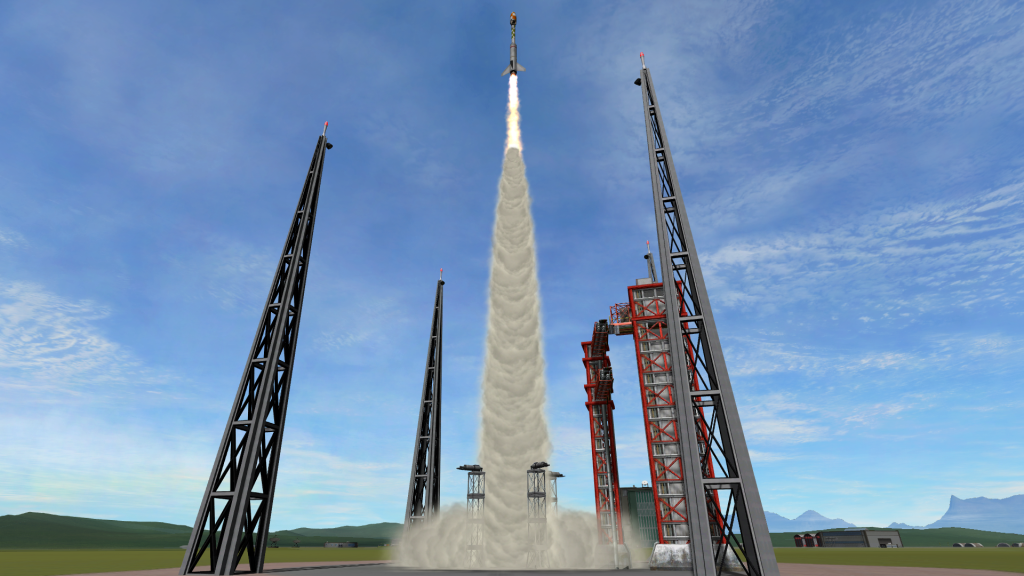 With all three previous missions failing for different reasons, the fourth and final planned mission for the Mk7-B received new objectives in the hope that this mission would be successful at last. The first change was to swap out the new booster for one that had been refurbished from a previous flight, which necessitated a launch delay that pushed the date back from 10/20 to 10/29. This booster was from the second Mk7-B flight back in late August and would be the first time we attempt to re-fly an engine. On the opposite end of the rocket we swapped out the parachute nose cone for a payload fairing that encapsulated a new Luciole smallsat prototype. This would be deployed onto the sub-orbital trajectory to test its systems and reaction wheels. Recovery would be of only the first stage booster and RTG casing from the payload, which did not contain any radioactive material for this mission. Other than the delay for booster integration, no problems occurred in the lead-up to launch.
With all three previous missions failing for different reasons, the fourth and final planned mission for the Mk7-B received new objectives in the hope that this mission would be successful at last. The first change was to swap out the new booster for one that had been refurbished from a previous flight, which necessitated a launch delay that pushed the date back from 10/20 to 10/29. This booster was from the second Mk7-B flight back in late August and would be the first time we attempt to re-fly an engine. On the opposite end of the rocket we swapped out the parachute nose cone for a payload fairing that encapsulated a new Luciole smallsat prototype. This would be deployed onto the sub-orbital trajectory to test its systems and reaction wheels. Recovery would be of only the first stage booster and RTG casing from the payload, which did not contain any radioactive material for this mission. Other than the delay for booster integration, no problems occurred in the lead-up to launch.
The Flight
After good retraction of the support arms at T-5s the Boostertron II solid rocket motor successfully ignited for an on-time launch at 13:45 local, pushing the rocket upwards off the pad with an initial force of 3.3Gs while the fins actuated to begin rolling the rocket from 90° towards 34°. Less than 2 seconds after launch it had spun enough to allow pitch-over to begin as well, with the flight computer guiding it along a gradual and constant change rate throughout the ascent. By L+10s the rocket had locked onto its heading and thrust from the SRB had already begun to taper off from its max 74kN to reduce loads on the rocket as it approached Mach 1.









